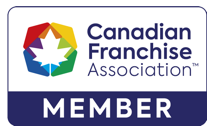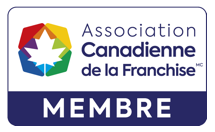When parties separate on amicable terms, they may choose to create a Separation Agreement without the involvement of lawyers or other third-party professionals. While the spirit of cooperation and collaboration in creating the Agreement is admirable and indeed encouraged, failing to create an Agreement with the proper safeguards can leave the Agreement vulnerable to being challenged, or “set aside” in the future.
Setting aside an Agreement refers to the process by which a party can ask the Court to essentially “cancel” all, or some, of the content in an Agreement which was previously signed. The reasons a party may want to do this are numerous, but generally speak to a party being dissatisfied with the Agreement after entering it and seeking to make changes to the Agreement on that basis. The process of setting aside an Agreement through the Courts is generally costly and time consuming (for both parties), as the arguments that must be made are complex.
Section 56 of the Family Law Act largely governs the circumstances under which an Agreement (or Domestic Contract) may be set aside or disregarded. This includes (but is not strictly limited to):
- a) Where the Agreement is not in the best interests of the children;
- b) Where child support within the contract is insufficient according to Provincial guidelines;
- c) If there is a lack of Financial Disclosure between he parties in relation to significant assets, debts or liabilities;
- d) The Agreement does not accord with the law of contract (general laws that apply in every contract signed, not just in the family law context);
- e) Where there is a restriction on the ability to remarry;
- f) Where there is a condition of chastity (abstinence from extramarital intercourse) in the Agreement.
Section 55 of the Family Law Act states that Agreements must be in writing, signed by both parties, and witnessed by a third party.
To avoid the uncertainty and risk associated with entering into an Agreement that could be challenged in the future, it is best to make sure proper safeguards are in place at the time of the Agreement being signed, and built-in to the Agreement itself. These safeguards are meant to provide predictability and certainty to the parties, while also shielding the Agreement as best as possible from challenges in the future.
Safeguard #1 – Independent Legal Advice (ILA)
While ILA is not a mandatory component of creating a binding Agreement in family law, it is the one that provides the most assurance and protection from the potential outcome of being set aside.
Parties are free to enter into any Agreement terms they please, however, receiving ILA provides one with an understanding of their rights and entitlements in family law, how the terms of your Agreement may differ from the “standard rules” that exist in Ontario family law, and what “vulnerabilities” exist in the Agreement and how they could potentially be rectified and addressed.
By both parties receiving and confirming in the Agreement that ILA was received, and having their respective lawyers sign off on an ILA Certificate, it extremely difficult/unlikely for the Agreement to be set aside in the future.
In providing ILA, lawyers have a duty to ensure that their client is signing the Agreement voluntarily, that there is no undue influence, pressure, or duress, and that their client is aware of the nature and consequences of the terms of the Agreement. Thus, even if a party is dissatisfied with the terms of the Agreement at a later date, they likely cannot plead ignorance to the terms they were entering into, as this would have been addressed by the ILA lawyer.
Safeguard #2 – Financial Disclosure
The exchange of full and frank financial disclosure between the parties at the time of negotiating and signing the Agreement is the best way to protect the Agreement from being set aside.
Full and frank financial disclosure is an essential component of creating an Agreement that is fair and binding in family law. The Family Law Act specifically states that failing to disclose significant assets, debts or liabilities at the time of the Agreement being signed can be a basis for setting aside an Agreement.
Transparency in financial disclosure allows both parties to enter terms of property division (equalization) and spousal/child support from a fully informed position. Thus, even if you choose to “walk away from” a greater financial settlement, or choose to “give more” than what the other person is entitled to, at least this decision is from an informed position.
Safeguard #3 – Ensure Negotiations are in Writing, or Summarized in Writing
To protect against arguments being made in the future by a party that they were unaware of what they were signing, that they were “duped” or that they were under pressure/duress to sign the Agreement, discussions between parties should be in writing, or at least, summarized in writing at the end of a meeting or discussion. This provides a paper trail which captures the negotiation process, details of what was being discussed, points at which consensus was reached, and why/how the Agreement that was ultimately signed looks the way it does. Lawyers do this by default in their practice when negotiating an Agreement.
At no point in time is it appropriate to prevent a party from seeking legal counsel, to threaten or instill fear in a party, to make ultimatums that leave a party with limited choices, or to lie in the negotiation process to gain an advantage. These will all be circumstances under which the Agreement could violate the basic laws of contract, and lead an Agreement vulnerable to being set aside.
It should be noted that Courts will generally respect Agreements entered into between separating parties, even if legal counsel is not directly involved. However, failing to have safeguards in place, as noted above, can impact the strength and enforceability of the Agreement, and leave it vulnerable to being challenged in the future.
If you are contemplating separation and wish to have a full understanding of what the process entails, feel free to contact one of our Family Lawyers at Mills & Mills LLP.
At Mills & Mills LLP, our lawyers regularly help clients with a wide range of legal matters including business law, real estate law, estate law, employment law, health law, and tax law. For over 130 years, we have earned a reputation amongst our peers and clients for quality of service and breadth of knowledge. Contact us online or at (416) 863-0125. The material provided through the Mills & Mills LLP website is for general information purposes only. It is not intended to provide legal advice or opinions of any kind.

 2 St Clair Ave West
2 St Clair Ave West


